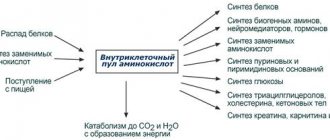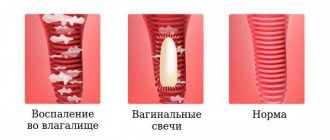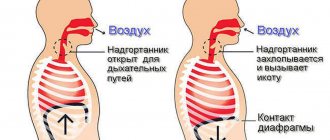Full text of the article:
Delayed gastric emptying can result in a range of symptoms including nausea, vomiting, early or easy satiety, feeling bloated, and weight loss. Treatment for this problem consists of 4 components:
- Supportive measures (hydration and nutrition).
- Adequate glycemic control in patients with diabetes.
- Drug treatment.
- Sometimes surgical treatment.
This review discusses these treatment interventions. The pathophysiology, etiology, and diagnosis of delayed gastric emptying are discussed separately.
Hydration and nutrition
Repeated vomiting and decreased oral fluid intake associated with delayed gastric emptying can lead to hypokalemia, metabolic alkalosis, dehydration, and poor blood sugar control (diabetes mellitus). Patients with gastric stasis syndrome also develop a deficiency of essential vitamins and minerals [1]. Patients who have previously undergone gastric surgery are particularly susceptible to iron deficiency (due to the inability to reduce the amount of ferrous iron in the diet towards the more easily absorbed ferric form) and vitamin B12 (due to intrinsic factor deficiency). The level of resection determines the severity of this deficiency. The supply of fluid, electrolytes and nutrients should be provided in the most simple, minimally invasive and effective way and selected individually for each patient [2]. Oral administration may be effective in some patients because... liquid usually leaves the stomach more easily than solid contents, and emptying of fluid from the stomach often remains normal with a significant delay in the removal of solid contents. Liquefied and homogenized foods and liquid supplements (homogenized protein supplements dissolved in skim milk) with liquid vitamins can provide a method of delivering calories, proteins, minerals and vitamins. A diet high in fat and fiber should be avoided because... the first slows gastric emptying, and the second requires the preservation of the antral migratory motor complex for emptying. Administration of antiemetics as suppositories or parenterally may facilitate oral feeding in some cases.
Symptoms of intestinal obstruction
- Pain. This is one of the very first signs of intestinal obstruction. It is observed in absolutely all patients. With tumor obstruction, pain occurs suddenly, for no apparent reason, and may even be one of the first signs of cancer. It has a cramping character. The greatest pain occurs at the time of peristaltic contractions, after which it subsides a little for a couple of minutes. Gradually, the intensity of the pain increases and after a few hours it becomes unbearable. They subside only on the 2-3rd day, when paralysis of the intestine already develops - “noise at the beginning, silence at the end”, a symptom of “grave silence”, when there are no sounds of peristalsis at all.
- Vomit. If the obstruction is located at the level of the small intestine or the right part of the large intestine, vomiting will be present in the early stages, as a sign of reflex irritation of the gastrointestinal tract. If there is obstruction of the terminal sections, vomiting will most likely not occur at first, or it will occur at large intervals. During breaks, patients may suffer from nausea, hiccups or belching. If intestinal obstruction persists, vomiting becomes indomitable, first the stagnant contents of the stomach and then the intestines are released, up to vomiting of feces. This is a bad sign, because it indicates that vomiting is a symptom of toxic cerebral edema, and it cannot be eliminated by draining the gastrointestinal tract.
- Retention of stool. This symptom is observed with obstruction at the level of the sigmoid and rectum. If there is high obstruction at first, the stool may persist.
- Bloating. There are 4 signs here: asymmetry of the abdomen, palpable bulge of the intestine, peristaltic contractions of the intestine that can be seen with the naked eye, tympanic sound upon percussion.
- Bloody or mucous discharge from the rectum. They usually occur with cancer of the terminal sections of the intestine and are associated with the secretion of mucus by the tumor, its disintegration, or injury from feces. [1,4,6]
In the process of developing the clinical picture of intestinal obstruction, three periods are distinguished (see Table).
Table 1 - Clinical picture of intestinal obstruction.
| Period | Symptoms |
| Early – up to 12 o’clock | The main symptom of this period is cramping swelling in the abdomen. Vomiting develops rarely and only with obstruction (blockage) at the level of the small intestine. |
| Intermediate – from 12 hours to 24 hours | At this time, the symptoms continue to increase and turn into a detailed picture. The pain becomes intense and even unbearable, without contractions, an enlarged abdomen, vomiting, and signs of dehydration appear. |
| Late – more than 24 hours. | The patient's condition worsens, the temperature rises, and a systemic inflammatory response develops, including peritonitis and sepsis. Shortness of breath and heart failure worsen. [4] |
Small intestinal tube
If an attempt at oral feeding is unsuccessful and gastrostasis is a consequence of gastric motility disorder, an enteric feeding tube can be inserted using percutaneous endoscopic or, preferably, laparoscopic and minilaparotomy techniques. A feeding tube allows liquid nutrients to be administered outside the stomach at a rate that allows most calories and nutrients to be taken in through an overnight continuous infusion. The patient is allowed to take small amounts of liquid food throughout the day. It is common practice to trial enteral feeding using a transnasally inserted tube for three days to ensure that at least 80 ml of formula can be administered within an hour. this rate is the minimum required for successful long-term enteral nutrition. Parenteral nutrition Parenteral nutrition is rarely necessary for patients with gastrostasis unless it is part of a general motility disorder. Patients with severe dilated or diffuse myopathic processes (visceral myopathy, progressive systemic sclerosis) may not respond to other forms of nutritional support and pharmacotherapy. Parenteral nutrition restores normal nutritional status in these patients [3].
Glycemic control in patients with diabetes mellitus
Diabetes mellitus is a common cause of slow gastric emptying. It has been suggested, but not proven, that effective glycemic control will improve gastric motility. This hypothesis is based in part on the following observations:
- Hyperglycemia caused in healthy individuals causes a decrease in antral motility, stimulates pressure in the pylorus and increases distension of the gastric fundus, all of the above slows down gastric emptying [4,5].
- Acute hyperglycemia can also affect gastric myoelectric activity and slow gastric emptying in patients with diabetes mellitus [6,7].
However, the role of chronic hyperglycemia is less clear. In one of the largest studies, for example, there was no significant difference in the rate of gastric emptying between patients with blood glucose levels above and below 270 mg/dL (15 mmol/L) [8]. Another potential concern is that glycemic control may be impaired in patients with delayed gastric emptying, even asymptomatic ones. Two factors may be responsible for this: variability in glucose absorption in patients receiving intensive insulin treatment and impaired absorption of oral hypoglycemic drugs [9]. However, there is no reliable data showing that treatment of gastrostasis improves the course of diabetes and prevents its complications.
Complications of mesenteric thrombosis
- Gangrene of the intestine. If the blood flow to the intestines is completely blocked, then its death develops.
- Perforation. The dead section of intestine may rupture. As a result, the contents of the intestines spill into the abdominal cavity, causing an infectious process in the peritoneum (peritonitis).
- Scar changes in the intestinal wall. Sometimes these dangerous complications do not develop, but the damaged intestinal wall is replaced by a scar, causing narrowing of the intestinal tube and the development of intestinal obstruction.
Medicines
Both prokinetic and antiemetic drugs may be useful in treating delayed gastric emptying. Intravenous erythromycin is the treatment of choice in patients unable to take oral medications, while cisapride is the drug of choice for those who tolerate fluid intake, although its use is heavily restricted in the United States (see below).
Erythromycin
Erythromycin IV (3 mg/kg every 8 hours) may be useful in restarting or kicking the stomach during acute episodes of gastrostasis in which oral administration is not possible. Erythromycin causes high-amplitude propulsive contractions of the stomach, which literally sweep away solid contents, including indigestible substances from the stomach [10,11]. Erythromycin also stimulates contractility of the fundus of the stomach or, at least, inhibits acamodative distension of the proximal part of the stomach after a meal [12]. One report examined the effectiveness of erythromycin in 10 patients with diabetic gastroparesis [13]. Intravenous administration of 250 mg erythromycin normalized the prolonged gastric emptying time for both liquid and solid contents. The amount of contents remaining in the stomach 120 minutes after eating a solid meal decreased from 63% (in the case of placebo) to 4% (in the case of erythromycin), the corresponding figures for liquid meals were 32 and 4%. A less pronounced, but still significant, improvement was observed after 4 weeks of oral erothromycin (250 mg three times daily).
Side effects of erythromycin remain a problem, including gastrointestinal toxicity, ototoxicity, pseudomembranous colitis and the emergence of resistant bacterial strains. Therefore, chronic use of erythromycin is currently limited to patients refractory to other medications such as cisapride (see below). The development of non-antibiotic erythromycin analogues, which is currently underway, holds promise for future treatment. (From the translator: erythromycin is not the only antibiotic with a pronounced prokinetic effect; a similar effect is observed, for example, with azithromycin).
Cisapride
If the patient is able to take liquids orally (and in areas where the medication is available), cisapride can be given in doses of 10 to 20 mg four times daily 30 minutes before meals and at bedtime. Cisapride stimulates 5HT4 receptors, which leads to the release of acetylcholine from the mesenteric nerve plexus [14]. It stimulates antral and duodenal motility and may improve antroduodenal coordination in obese diabetics with neuropathy [15]. Cisapride accelerates gastric emptying of solid and liquid contents in a number of syndromes associated with gastrostasis [16,17]. This effect persisted during a long-term (one year) open study [18,19].
Cisapride is more potent and better tolerated than corresponding doses of metoclopramide [17]. Side effects include abdominal discomfort and increased stool frequency, however, they decrease with dosage adjustment. In addition, there is an important interaction with drugs (which can cause cardiac arrhythmias and death) metabolized by the cytochrome P450-3A4 esoenzyme (macrolide antibiotics, antifungals, phenothiazines), which has prompted the drug's manufacturer to limit its availability in the United States. A drug can only be prescribed directly through the manufacturer after providing documentation of the need for this drug and assessing the patient’s individual risk of developing cardiac arrhythmias (QTc >0.45 seconds). The total dose of cisapride should not exceed 1 mg/kg per day in adults (maximum 60 to 80 mg). There is no evidence of increased effect with higher doses. New drugs targeting the 5HT4 receptor have some effect on gastric emptying, but have not been adequately tested in patients with gastric emptying disorders [20,21].
Metoclopramide
Parenteral metoclopramide is an alternative to intravenous erythromycin for patients unable to take oral medications [22]. Metoclopramide has both antiemetic and prokinetic activity. However, extrapyramidal side effects and the risk of tardive dyskinesia, although rare, have reduced the use of the drug in recent years. In general, it is less well tolerated than cisapride [17]. Oral metlopramide is rarely used due to potential central nervous system side effects (anxiety, agitation, depression), hyperlactinemia, and the availability of cisapride.
Increased uterine tone in pregnant women
Many pregnant women face the problem of hypertonicity of the uterus, which is a muscular organ. Excessive tension in the uterus of a pregnant woman can be dangerous for the unborn child and cause abortion, especially in the early stages, when the embryo has not yet attached well enough to its walls. The body perceives the embryo as a foreign object and tries to get rid of it, push it out of the uterus through its contractions. Sometimes a woman may not feel any tone at all, but most often its signs are:
- nagging pain in the lower abdomen or lower back;
- “petrification” of the abdomen, it becomes hard and changes shape;
- Uncharacteristic discharge, sometimes bloody.
Since the consequence of uterine tone can be a miscarriage, you should consult a doctor at the first signs. Based on the results of the examination, tests, and ultrasound, the doctor determines the cause of this pathological condition and prescribes the necessary treatment.
Causes of uterine hypertension during pregnancy:
- physical exercise;
- overwork;
- stress, nervous state of the pregnant woman;
- diseases of the female reproductive organs such as fibroids, endometriosis, inflammation;
- infectious disease of a pregnant woman;
- hormonal disorders, for example, the level of the male hormone is higher than the female one.
When eliminating uterine tone in pregnant women, the doctor needs to find the cause of this phenomenon. Basically, women require inpatient treatment, complete rest, a minimum of movements and physical activity, and emotional balance. A pregnant woman must understand that she is responsible not only for her life, but also for the life of her unborn child, so you should not self-medicate, but seek medical help at the first suspicion.
Tegaserod
Tegaserod is a partial 5-HT4 receptor agonist approved for the treatment of women with constipation-predominant IBS. In clinical pharmacodynamic studies, Tegaserod accelerated oral-cecal transit in patients with constipation-predominant IBS and in healthy volunteers [23,24]. Formal studies have not been conducted in patients with gastric emptying disorders. (From the translator - Tegaserod is not registered in Russia).
Antiemetics
Antiemetics have been used freely in the past in combination with prokinetic agents, including cisapride, to relieve symptoms. However, more recent recommendations caution against the concomitant use of phenothiazines and cisapride (see above). Antihistamines (diphenhydramine) can be administered orally and rectally, and phenothiazines (compazine) parenterally and rectally as clinically indicated. 5HT3 antagonists such as ondansetron, granisetron or tropisetron have not shown benefit over other antiemetics in patients with delayed gastric emptying syndrome.
Domperedon
Domperedone is not approved by the US Food and Drug Administration. Its effectiveness in diabetic gastroparesis is similar to that of metoclopramide [25]. Animal studies have shown that, like cisapride, domperedone may increase the risk of cardiac arrhythmias [26].
Administration of botulinum toxin
A pilot study of 10 patients with gastroparesis demonstrated improved gastric emptying following botulinum toxin injection into the pylorus [27]. Larger controlled studies are needed before this treatment can be recommended.
Decompression
A percutaneously or laparoscopically placed gastrostomy or jejunostomy tube relieves compression in the dilated bowel, which reduces the need for hospitalization in patients with more general peristalsis disorders due to acute peristalsis disorders [28,29]. One report, for example, found that readmission rates in 12 patients with chronic intestinal pseudo-obstruction were reduced from 0.5 to 0.1 per year after placement of an indwelling enterostomy tube [29]. In patients without an indwelling enterostomy tube, intravenous erythromycin usually reverses stasis quickly. Consequently, nasogastric decompression is rarely necessary.
Treatment of intestinal obstruction and first aid
If a patient is suspected of intestinal obstruction, he is immediately hospitalized in a hospital, since the timing of treatment directly affects the prognosis. Both conservative and surgical methods are used.
As part of conservative therapy, the following procedures are used:
- Bowel decompression. For this purpose, removal of intestinal contents above the site of obstruction using probe aspiration or enemas can be used.
- Correction of water and electrolyte disturbances, replenishment of fluid loss. For this purpose, infusions of crystalloid solutions are prescribed.
- Pain relief. Antispasmodics and analgesics are prescribed, for example, atropine, platyphylline, etc.
- Replenishment of protein loss - infusion of protein drugs.
- To prevent infectious complications, broad-spectrum antibiotics are prescribed.
- Stenting of the intestinal lumen. Using an endoscope, a self-expanding stent is inserted into the site of intestinal obstruction. It pushes tumor tissue apart and maintains the intestine in a straightened state, ensuring the free passage of its contents. This way, time is gained for more thorough preparation for the planned intervention. [7,9]
This is especially important for cancer patients, since extensive tumor damage leads to the need for a colostomy. Placement of a stent for tumor obstruction allows time for neoadjuvant or perioperative chemotherapy. This will reduce the volume of the tumor mass and, possibly, even perform radical surgery. In other cases, this provides a chance to perform bypass anastomoses. For patients with end-stage colorectal cancer, who have a high risk of complications from surgery and anesthesia, stenting is the mainstay of treatment for intestinal obstruction. After the procedure, the patient continues to be monitored and surgical treatment is resorted to only in case of life-threatening complications. [1]
In all other cases, surgery is indicated, since the tumor will continue to grow and sooner or later a relapse of obstruction will occur.
In a compensated condition, surgical intervention can be delayed for up to 10 days; in a subcompensated condition, it is performed as early as possible, after the patient has stabilized. And if there are symptoms of peritonitis, emergency surgery is performed.
In any case, during surgery for intestinal obstruction, the abdominal cavity is opened (laparotomy) and revised. The location of the tumor, its relationship with surrounding tissues, and the presence of visible metastases are determined. An assessment of the viability of the intestinal wall is also performed to determine the extent of resection.
Ideally, radical removal of the tumor is performed through resection of the affected part of the intestine and restoration of intestinal continuity through anastomosis. Unfortunately, when obstruction develops against the background of a malignant process, it is very difficult and risky to perform such a volume of surgery in one stage, since there are extensive tumor lesions.
As a rule, in such cases palliative operations are performed:
- Performing a bypass anastomosis around a fragment of intestine with a tumor. Thus, the impassable (obstructed) section is excluded from the digestive chain.
- Stoma removal - a section of the intestine located above the site of obstruction is brought out onto the anterior abdominal wall in the form of an opening. Through it, the intestinal contents will be drained into a special bag - a colostomy bag.
Ostomy is a mutilating operation and is difficult for patients to endure morally. But in this situation, saving the patient’s life comes first. If possible, after stabilizing his condition and eliminating the consequences of intestinal obstruction, further treatment is carried out, for example, chemotherapy, radiation therapy, and, if the results are satisfactory, reconstructive interventions are performed to restore the integrity of the intestine. [1,5,7]
Book a consultation 24 hours a day
+7+7+78
Bibliography:
- Clinical recommendations: Acute intestinal obstruction of tumor etiology in adults. — Ministry of Health of the Russian Federation. — 2022.
- Methodological development for the practical lesson “Acute intestinal obstruction” Ed. USMA, Yekaterinburg, 2011 - 25 p.
- Clinical recommendations: Acute intestinal obstruction of tumor etiology. - Moscow, 2014.
- B. O. Kabeshev, S. L. Zyblev. Acute intestinal obstruction. — A practical guide for doctors. — Gomel, 2022.
- M.Yu. Kabanov, I.A. Solovyov, O.V. Balura. — Results of complex treatment of patients with acute intestinal obstruction of carcinomatous origin. - Bulletin of the Russian Military Medical Academy, 1(37)-2012.
- A.V. Pugaev, E.E. Achkasov, M.G. Negrebov. — Intussusception intestinal obstruction in adults. — Surgery, 5 — 2022.
- National clinical guidelines “Acute non-tumor intestinal obstruction”. — Russian Society of Surgeons. — 2015.
- Abdukarimova M.K. — X-ray diagnosis of intestinal obstruction. — Bulletin of AGIUV. — 2008, No. 5(8).
- Patrick Jackson, and Mariana Vigiola Cruz. — Intestinal Obstruction: Evaluation and Management, Am Fam Physician. 2022 Sep 15;98(6):362-367.
- Bertrand Trilling, Edouard Girard. — Intestinal obstruction, an overview — Rev Infirm. 2016 Jan;(217):16-8. doi: 10.1016/j.revinf.2015.10.028
- Thévy Hor, François Paye. — Diagnosis and treatment of an intestinal obstruction. — Rev Infirm. 2016 Jan;(217):19-21. doi: 10.1016/j.revinf.2015.10.030.
Surgery
Surgery is rarely indicated in patients with non-obstructive gastrostasis, except for the purpose of effective decompression (ventral gastrostomy or jejunostomy) or to perform subtotal gastrectomy in patients with a previous partial gastrectomy. In one study, for example, 40 patients with severe gastric atony (32 vagotomy, 6 idiopathic, and 2 diabetic gastroparesis) underwent either subtotal or total gastrectomy with Roux-en-Y gastroenterostomy [30]. Outcome was assessed by improvement of symptoms and Visick scale:
- First degree - excellent result, no symptoms
- Second degree - mild, intermittent symptoms easily controlled by diet
- Third degree - symptoms of moderate severity significantly affecting the patient’s lifestyle
- Fourth degree - unsatisfactory outcome
Of 39 patients followed for an average of 32 months, 31 (79%) had symptomatic relief after surgery, 26 (66%) had at least a grade 1 improvement on the Visick scale after surgery, and 22 (56%) had improvement from grade 3-4 before surgery to grade 1-2 after surgery. A third of patients showed no improvement. There were no deaths after the operation. Surgery was recommended for patients with intractable nausea, vomiting, or malnutrition. Another study included 62 patients who underwent total gastrectomy for severe gastrostasis after gastrectomy [31]. Surgery was considered successful (Visick grade 1 or 2) in 43% of patients at a mean follow-up of 5 years. Nonvariance analysis did not find preoperative characteristics predictive of good outcome. In contrast, poor outcome was predicted by a combination of nausea, need for total parenteral nutrition, and retention of food in the stomach during gastroscopy.
Stasis syndrome with Y-shaped anastomosis according to Roux
Many patients with postgastrectomy gastrostasis continue to experience significant postoperative problems including Roux-en-Y stasis syndrome[32]. In this condition, stasis occurs in the remaining part of the stomach and the distal part of the efferent loop [33]. This syndrome is particularly difficult to treat. It is important to make sure that the Roux loop is no longer than 45 cm, because greater length is associated with local stasis. Some patients with food retention predominantly in the gastric stump experience improvement after subtotal gastrectomy. Otherwise, Roux-en-Y stasis syndrome is treated in the same way as chronic intestinal pseudo-obstruction, with special attention to fluid balance, antiemetics and prokinetic agents.
What happens with gastric atony?
With gastric atony, a person feels fullness in the abdomen
Gastric atony is one of the serious diseases accompanied by loss of muscle tone in this organ. Typically, gastric atony occurs due to asthenia or damage to the nerves located in it. With atony, the peristalsis of the stomach muscles is disrupted, which significantly affects its functioning.
Gastric atony is a rather rare and little-studied disease. The disease receives a significant impetus for development as a result of the patient undergoing complex operations or as a result of complications of existing pathologies in the body. In medicine, cases have been described in which the disease developed against the background of severe stress experienced by a person.
Gastric atony develops according to the same scenario as many diseases affecting the organs of the digestive system. Therefore, it is sometimes quite difficult to make an accurate diagnosis of the disease based on the existing symptoms. Gastric atony most often affects people who are underweight and exhausted by various weight loss diets. Excessive overeating also contributes to a decrease in muscle tone of the stomach, as does food with a lack of plant fiber.
Treatment of gastric atony is aimed at restoring lost muscle tone in the walls of the stomach. If you follow all the recommendations of your doctor, you can get rid of this disease in a short time.










